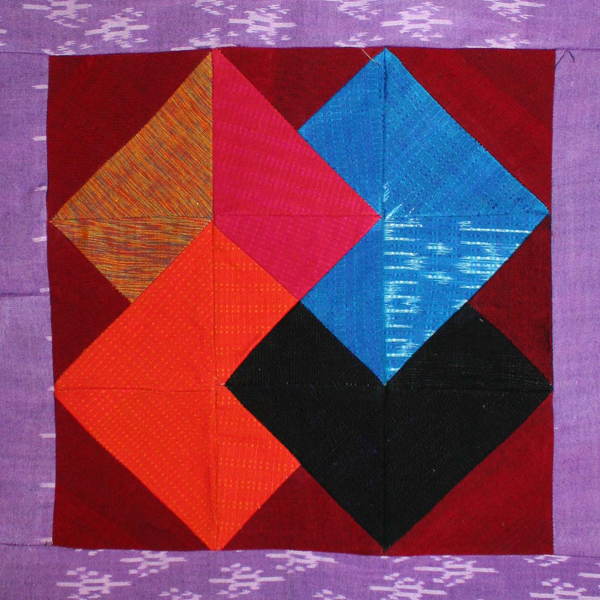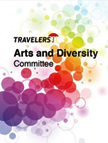Appliqué |
|---|
 |
A11: This is also a sofa pillowcase paj ntaub made by the Hmong for Westerners and tourists. It is an abstract geometric appliqué with each overlapping cotton cloth patch sewn onto the red background in a method known as quilting. The purple frame is used as a border.
|
|
Back to Top |
A12: This piece was constructed utilizing very basic appliqué techniques. The motifs include mountains, and a pinwheel. Each triangle shape was cut individually and sewn as appliqué onto the layover cloth.
By OTOP, 2005, 42x43 cm Photo by Xai S. Lor, item at the Hmong Archives |
Back to Top |
A13: This tapestry was constructed utilizing an appliqué method. The motifs found in the tapestry include mountains. The frog is not a motif, but rather the subject/figure of the tapestry. Its mouth was embroidered in chain stitches, and its eyes were constructed utilizing chain stitches.
By Pan Yang, 1998, 41x45 cm Photo by Xai S. Lor, item at the Hmong Archives |
Back to Top |
A14: This tapestry was constructed in appliqué. A chicken eye motif was embroidered and is used as an embellishment. The figure represented on the tapestry is a duck. This piece was made to be used as a wall decoration, perhaps in a nursery room.
By an unknown artist, 1980s - 1990s, 32x33 cm Photo by Xai S. Lor, item at the Hmong Archives |
Back to Top |
A15: It is very unusual to see artwork of this nature in the Hmong community. Typically an animal tapestry is constructed with embroidery needlework; however, this one was completed utilizing appliqué. Different cotton color pattern fabrics were cut into the shape of animals and sewn as appliqué onto a piece of cloth. This piece is similar to a quilt. The mountain motif was sewn as appliqué and functions as a border. |
Back to Top |
A16: This is a “new concept” appliqué story cloth from Laos. It was made in 2011 and sold in the Night Market in Luang Prabang, one of three purchased for the Hmong Archives collections. Chamee Lauj has been inspired to make such creations for the tourist trade there. The method used involves appliqué with outline embroidery stitches. The piece contains cotton and synthetic materials. The appliqué figures resemble the Hmong moj zeej (shadows or spirits); however, they include complete faces with eyes, noses, and mouths. The story depicted on this blanket is not familiar, and is left up to the viewer’s interpretation in the ever changing and innovative world of Hmong paj ntaub. |
Back to Top |
 |
A17: This tapestry is oversized, and as big as a blanket. It was sold at the Night market in Luang Prabang. The two purple figures depict demons. On the tapestry, there is written text. It says “A long time ago, a ghost caught and ate a human. This made the earth empty. When the king saw this he told his daughter to come to the earth and help the humans.” The story depicted on the appliqué is most likely Laotian in origin.
By Chamee Lauj, 2012, 158x227 cm Photo by Xai S. Lor, item at the Hmong Archives |
Back to Top |
Page 1 << Page 2 |



